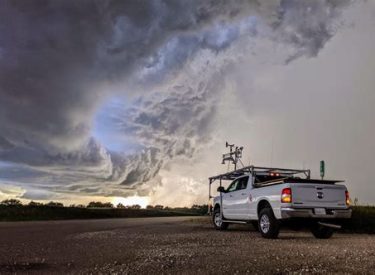OU earns lead for up to $208M NOAA severe weather research
Mike Seals - June 15, 2021 11:37 pm

NORMAN, OKLA. – The National Oceanic Atmospheric Administration announced today it selected the University of Oklahoma to host NOAA’s new Cooperative Institute for Severe and High-Impact Weather Research and Operations (CISHIWRO). The selection comes with an award of up to $208 million over five years, with the potential for renewal for another five years based on successful performance.
“It is an extraordinary honor for the university to be selected to lead the new Cooperative Institute for Severe and High-Impact Weather Research and Operations,” said OU President Joseph Harroz Jr. “As Oklahoma’s flagship institution, our mission is to harness innovation and pathbreaking discoveries to advance society. Through the new cooperative institute and the work of hundreds of researchers, we will see profound advancements in the study of weather, leading to improved warning systems that will ultimately save lives.”
The mission of CISHIWRO is to conduct severe and high-impact weather research in order to improve the understanding of severe and high impact weather in collaboration with NOAA. OU leads the cooperative institute with new partner institutions Howard University, The Pennsylvania State University, Texas Tech University and University of Albany. The institute will also collaborate with the NOAA Cooperative Science Center in Atmospheric Sciences and Meteorology (NCAS-M), in addition to others.
The award reaffirms NOAA and OU’s 43 years of collaboration and increases funding by $66 million to extend the work of NOAA’s previous cooperative institute at OU.
“The acronym CISHIWRO better represents the breadth of research, the transition of research to operational products and the cooperative institute,” said Greg McFarquhar, director of the Cooperative Institute for Mesoscale Meteorological Studies (CIMMS), NOAA’s previous cooperative institute hosted by OU. “This award allows uniquely qualified personnel at OU to be able to conduct research to solve problems of mutual interest at NOAA and OU to improve our basic understanding of weather phenomena and to help produce better forecast and warning tools to save lives and property.”
CISHIWRO will continue to address some of NOAA’s major research themes, in addition to new research areas. The five research themes include: weather radar and observations research and development, mesoscale and stormscale modeling research and development, forecast applications improvements research and development, subseasonal-to-seasonal (S2S) prediction for extreme weather events, and social and socioeconomic impacts of high impact weather systems.
“This award provides resources for CISHIWRO to advance observational tools and apply high-resolution weather models to quantify uncertainty, produce National Weather Service forecaster training and online resources, understand S2S forecasts, and determine the societal impact of weather phenomena,” said McFarquhar. “Another critical component of our work will include educational and outreach opportunities, including those to underserved populations. NOAA and OU’s support is critical for advancing our research and mission.”
“This award reaffirms the University of Oklahoma as a leader in atmospheric science and meteorological research,” said Tomás Díaz de la Rubia OU vice president for research and partnerships. “We are thrilled to expand our capacity to generate real-world solutions to the global grand challenges of weather and climate.”
CISHIWRO transitions into a long-standing center of excellence, formerly known as CIMMS, and known for research in mesoscale meteorology, weather radar and regional climate, and transitioning many research products into National Weather Service operations.
CIMMS was the largest research organization at OU with more than 220 employees. NOAA supports 20 cooperative institutes consisting of 70 universities and research institutions in 28 states and the District of Columbia. These research institutions provide strong educational programs that promote student and postdoctoral scientist involvement in NOAA-funded research.



